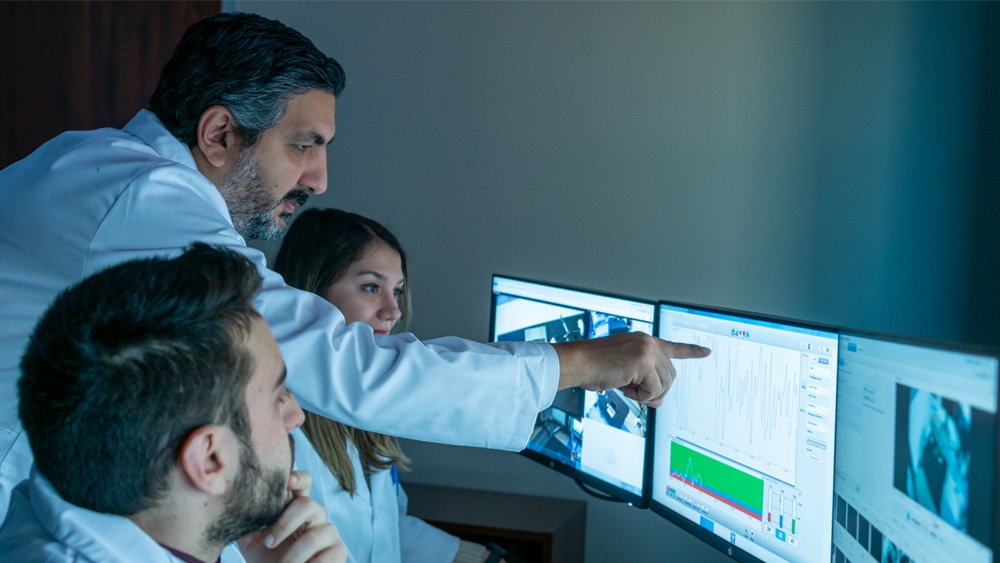
Nurses help millions of people address their physical and mental health. But who makes sure the nurses’ health is taken care of? Dr. Farzan Sasangohar, associate professor in the Wm Michael Barnes ’64 Department of Industrial and Systems Engineering at Texas A&M University, aims to better understand systemic contributors to providers’ mental health issues such as stress, anxiety, post-traumatic stress disorder and burnout.
Sasangohar’s research focuses on applying human factors engineering methods to design, develop and evaluate complex systems such as health care. His latest study used innovative and unconventional ways to evaluate how workloads and other factors could tax intensive care unit nurses’ cognition and trigger stress events that may lead to burnout over time.
Sasangohar’s multidisciplinary research team — including researchers with clinical, psychology and industrial engineering backgrounds — used nonintrusive, wearable eye tracking and physiological monitoring technologies to collect real data. Participants in the study were registered nurses in a cardiovascular intensive care unit at Houston Methodist Hospital. Nurses wore the glasses for the entirety of their 12-hour shift, and their physiological reactions to stress were assessed over several shifts. The data provided an objective account of tasks conducted, identified potential distractions and accurately tracked gaze behavior, which Sasangohar said is key to understanding mental load.
“We were interested in documenting what external triggers or events lead to stressful events or high workload, and how mental health outcomes changed over the duration of a shift,” Sasangohar said. “We were also interested in differences between the day and night shifts in terms of physical and cognitive loads and stress.”
The research, partially funded by a Dyer Fellowship awarded to Sasangohar at Houston Methodist Hospital, documented several key relationships between stress and physiological correlates, including heart rate and skin temperature, and eye metrics such as the number of eye fixations, gaze entropy and pupil diameter. One interesting finding was the workload did not significantly differ between the day and night shifts. While the night shift involved relatively fewer social and team-related activities, the effects of drowsiness might have made the workload equivalent to the day shift. The unique dataset collected in this study may pave the way for further research to support nurses’ work.
“The eye tracking data collected covering the entire shift of more than 20 nurses provides a unique opportunity to understand the context of care and has implications beyond mental health,” Sasangohar said. “For example, the data can be used for task and teamwork training, quality improvement, workflow analysis, among other purposes.”
This research has been published in two separate articles in Human Factors: The Journal of the Human Factors and Ergonomics Society:
- Quantifying Workload and Stress in Intensive Care Unit Nurses: Preliminary Evaluation Using Continuous Eye-Tracking
- Quantifying Occupational Stress in Intensive Care Unit Nurses: An Applied Naturalistic Study of Correlations Among Stress, Heart Rate, Electrodermal Activity, and Skin Temperature
Sasangohar’s next steps involve using some of his team’s recent advancements in objective measurements of cognitive and physical stress to design and evaluate remote and continuous stress monitoring and self-management tools for nurses.
“Health care is one of the most complex and difficult work environments that we will all interact with and benefit from at some point,” he said. “The COVID-19 pandemic has taken a significant toll among health care providers and has resulted in an alarming increase in mental health issues. I’m passionate about this vulnerable population, and I’m glad my research will potentially improve their well-being.”